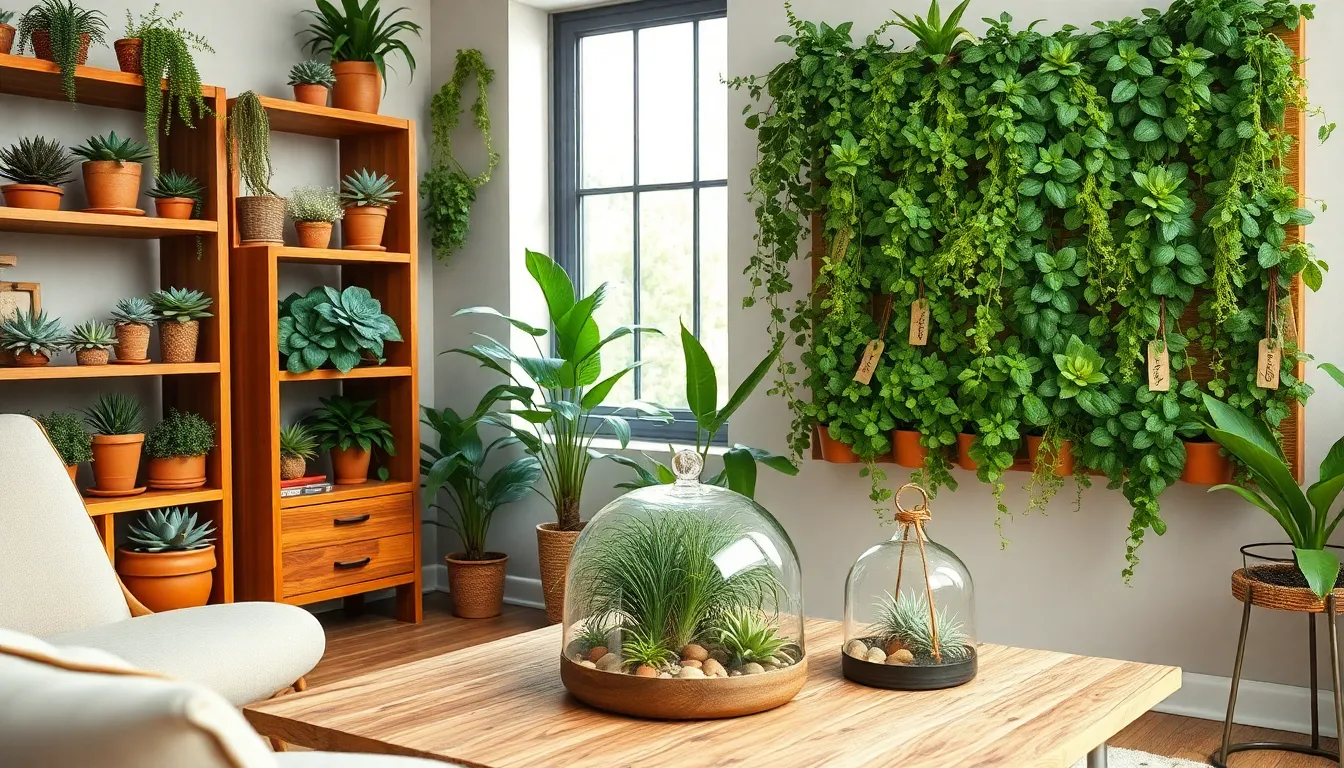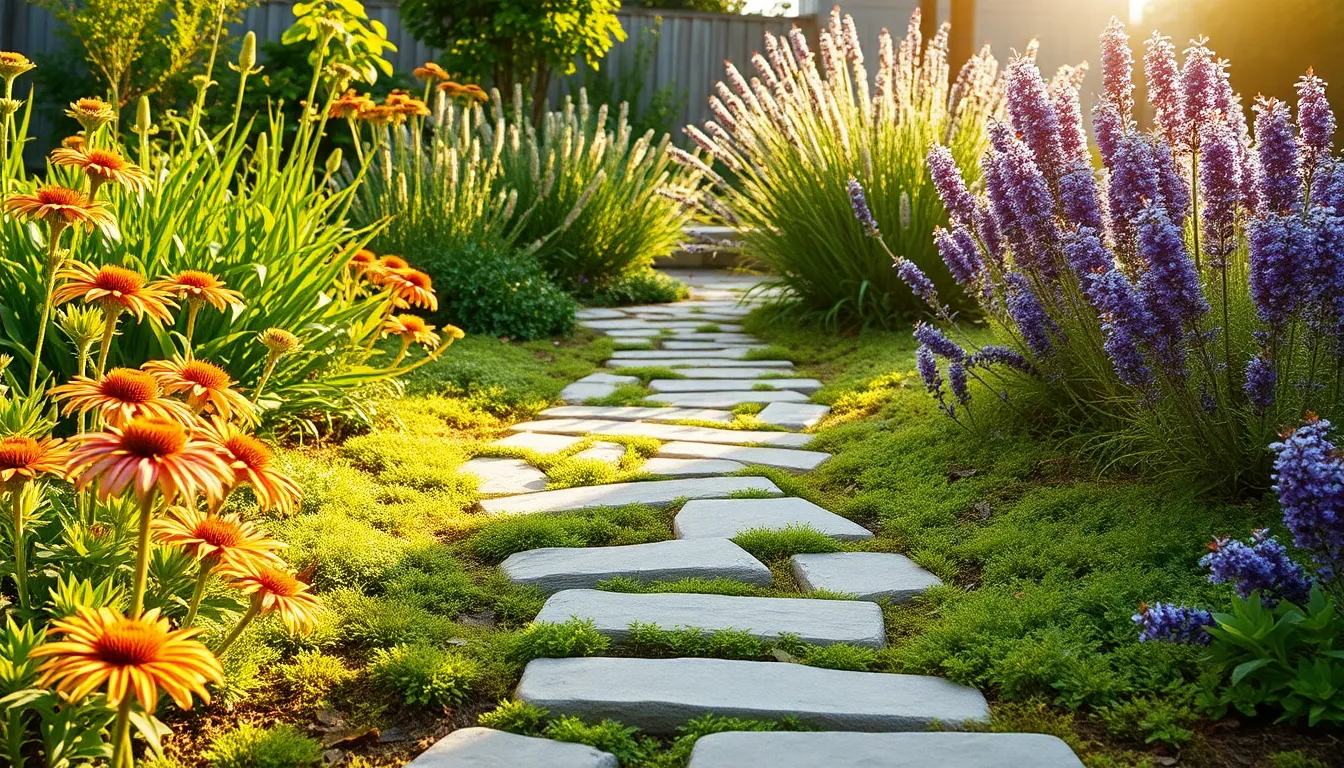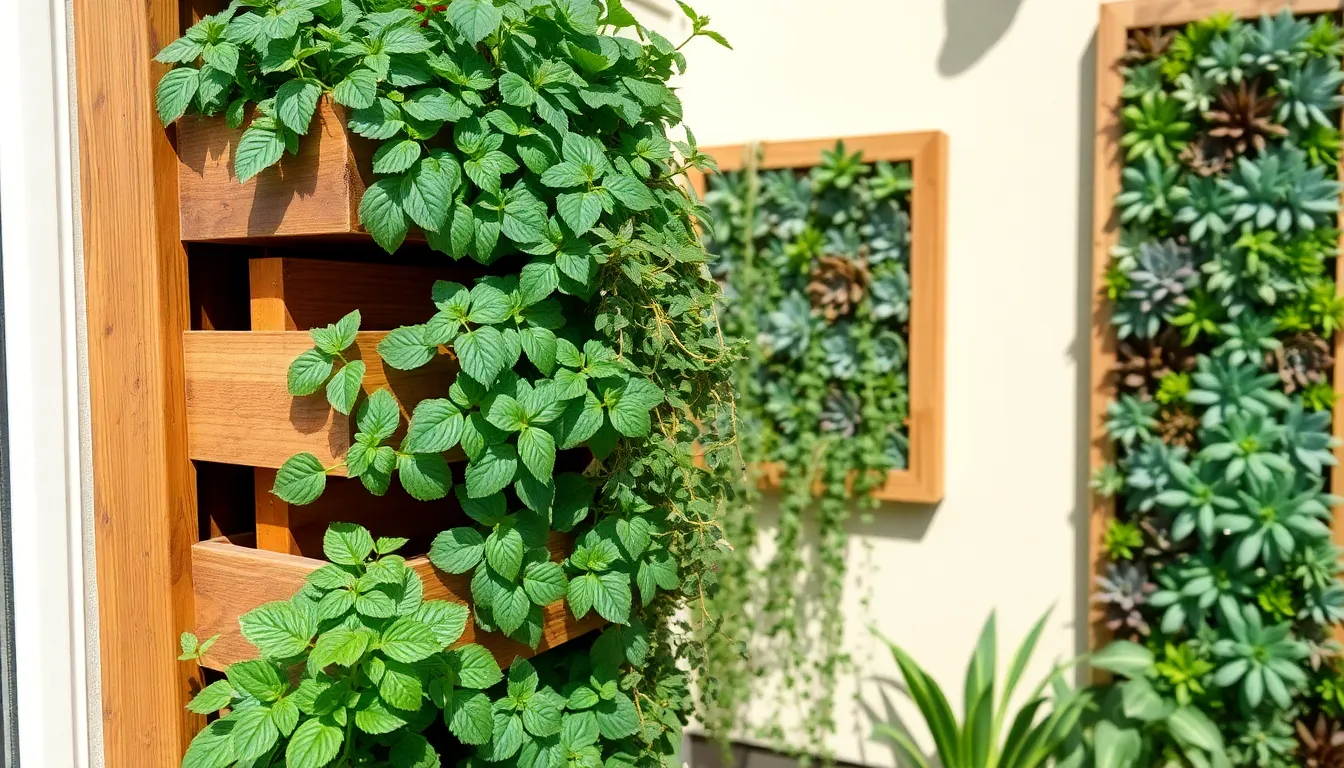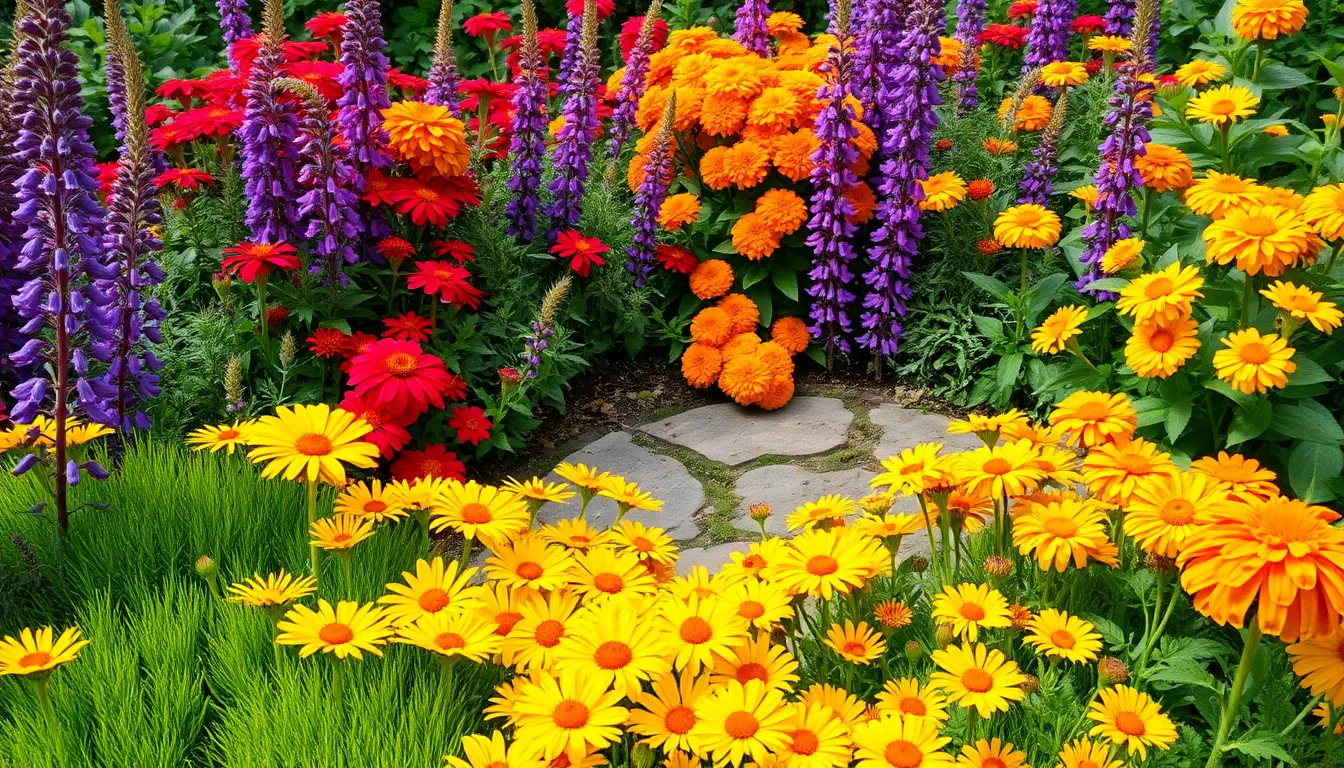Welcome to a world where lush greenery thrives, even in the coziest of corners! Whether you’re just beginning your journey as a gardener or have years of experience tending to plants, “Indoor Garden Ideas for Small Spaces” offers a treasure trove of inspiration to transform any nook into a vibrant oasis. Here, you’ll discover that a lack of square footage is no obstacle to cultivating a personal Eden—it’s an opportunity to get creative and let your passion for plants flourish.
Imagine the delight of waking up to a home filled with thriving foliage, each leaf a testament to your nurturing hand. This guide is packed with practical designs to maximize your space, promising not just aesthetic beauty but also improved air quality and a touch of tranquility to your daily routine. With step-by-step advice and innovative ideas, you’ll gain the confidence to cultivate a garden that brings joy and satisfaction, regardless of the space you have.
Choose Vertical Planters Wisely
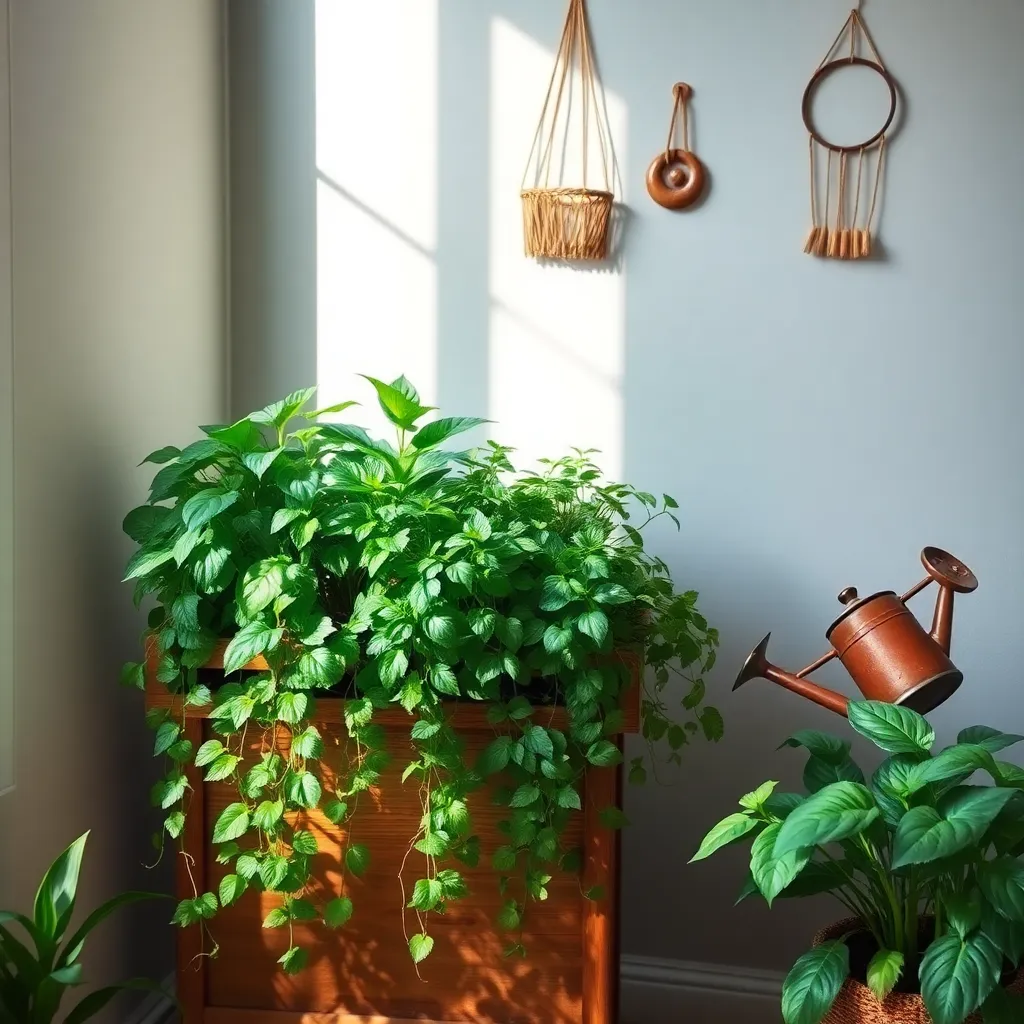
Choosing the right vertical planters can transform your limited indoor space into a lush, green oasis. Consider the material of the planter; options like felt pockets or wooden frames can affect water retention and plant health.
For beginners, it’s essential to select planters that offer adequate drainage to prevent root rot. Look for designs with built-in drainage or plan to add drainage holes yourself if you’re using repurposed containers.
Advanced gardeners might experiment with self-watering vertical planters to maintain consistent moisture levels. These planters are particularly beneficial for moisture-loving plants like ferns and herbs that thrive in consistently damp conditions.
When selecting plants, opt for species that naturally thrive in smaller root spaces, such as succulents, pothos, or small varieties of ferns. Rotate your plants regularly to ensure even light exposure, especially if your vertical garden is against a wall with limited light access.
Utilize Wall-Mounted Shelves
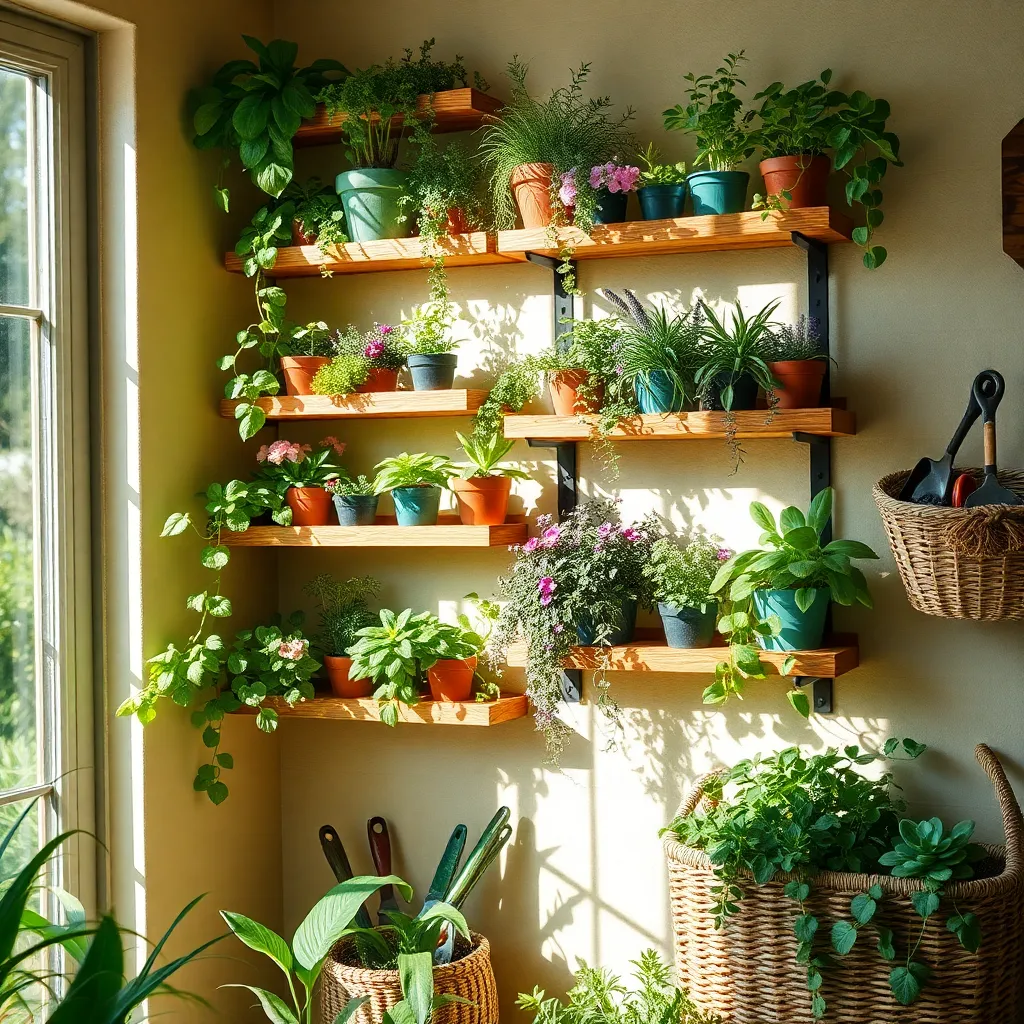
Wall-mounted shelves are a fantastic way to maximize your indoor gardening space, especially in small areas. By elevating your plants, you free up floor space while creating an eye-catching display that can brighten any room.
When choosing plants for wall-mounted shelves, consider using those that thrive in moderate light and have a trailing habit, such as pothos or string of pearls. These plants not only adapt well to shelves but also add a lush, cascading effect that enhances visual interest.
Ensure that your shelving is sturdy enough to support the weight of your pots and plants. It’s crucial to use anchors or studs for mounting, as this will prevent accidents and ensure the safety of your plants.
Watering can be challenging with wall-mounted shelves, so select pots with good drainage and use a watering can with a long spout. This will help you reach your plants easily and prevent water from spilling onto your floors or walls.
To optimize plant health, position your shelves near a window that provides adequate light without direct sun exposure, which can scorch leaves. If natural light is limited, consider installing adjustable LED grow lights to ensure your plants receive the necessary light spectrum for growth.
For a more advanced setup, experiment with plant groupings that have similar care requirements. This simplifies maintenance and ensures that each plant receives the appropriate amount of water and nutrients, fostering a thriving indoor garden.
Opt for Multi-Purpose Furniture
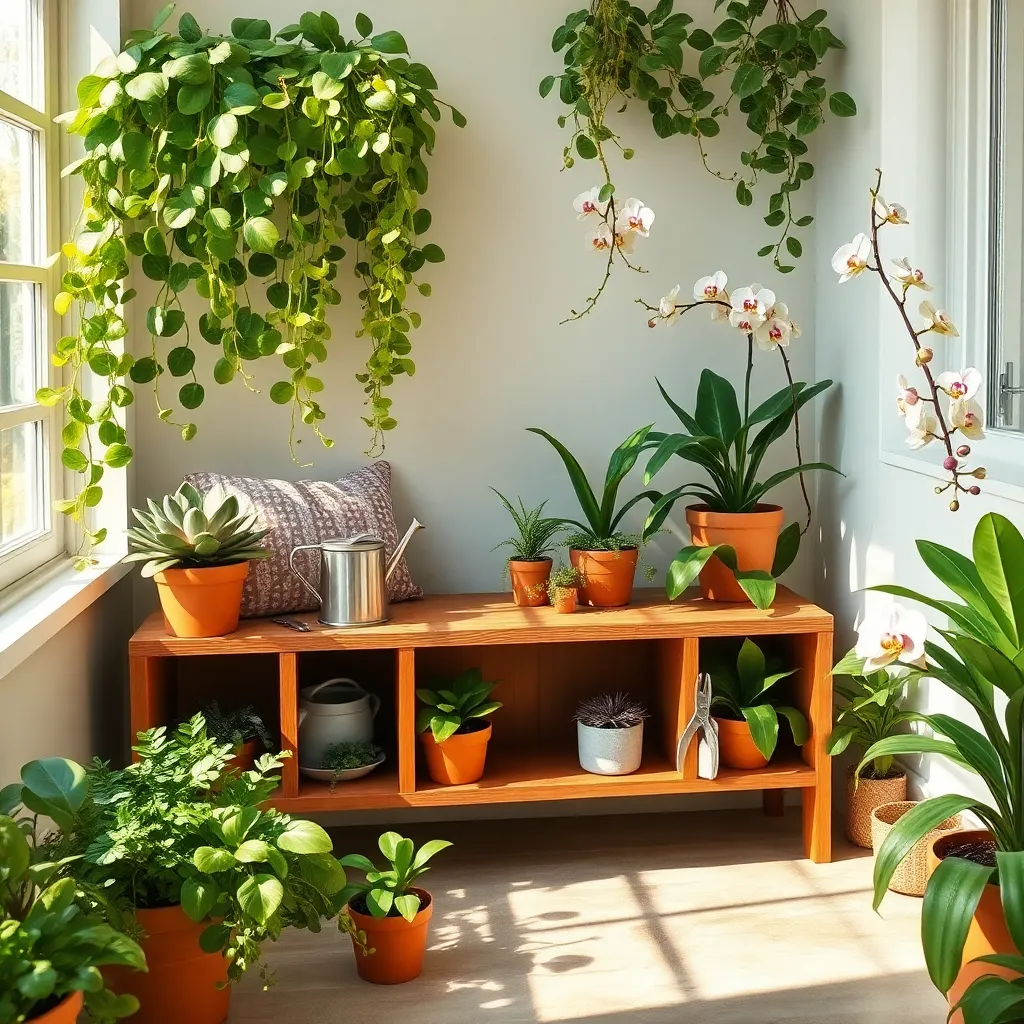
Choosing multi-purpose furniture can be a game-changer for maximizing space in your indoor garden. Consider using a bench with built-in planters or a coffee table that doubles as a terrarium to seamlessly integrate plants into your living space.
Multi-purpose furniture not only saves space but also enhances the aesthetic appeal of your home. Select items that include shelves or drawers, which can store gardening tools, seeds, or a watering can, keeping your indoor garden organized.
Incorporate a vertical garden stand that can serve as a room divider, perfect for small apartments. Opt for sturdy materials like metal or treated wood that can support the weight of multiple potted plants and withstand humidity.
For those who love to cook, a kitchen island with a built-in herb garden can provide easy access to fresh ingredients. Ensure adequate light for your herbs by placing the island near a bright window or supplement with grow lights to maintain healthy growth.
Select Compact Plant Varieties
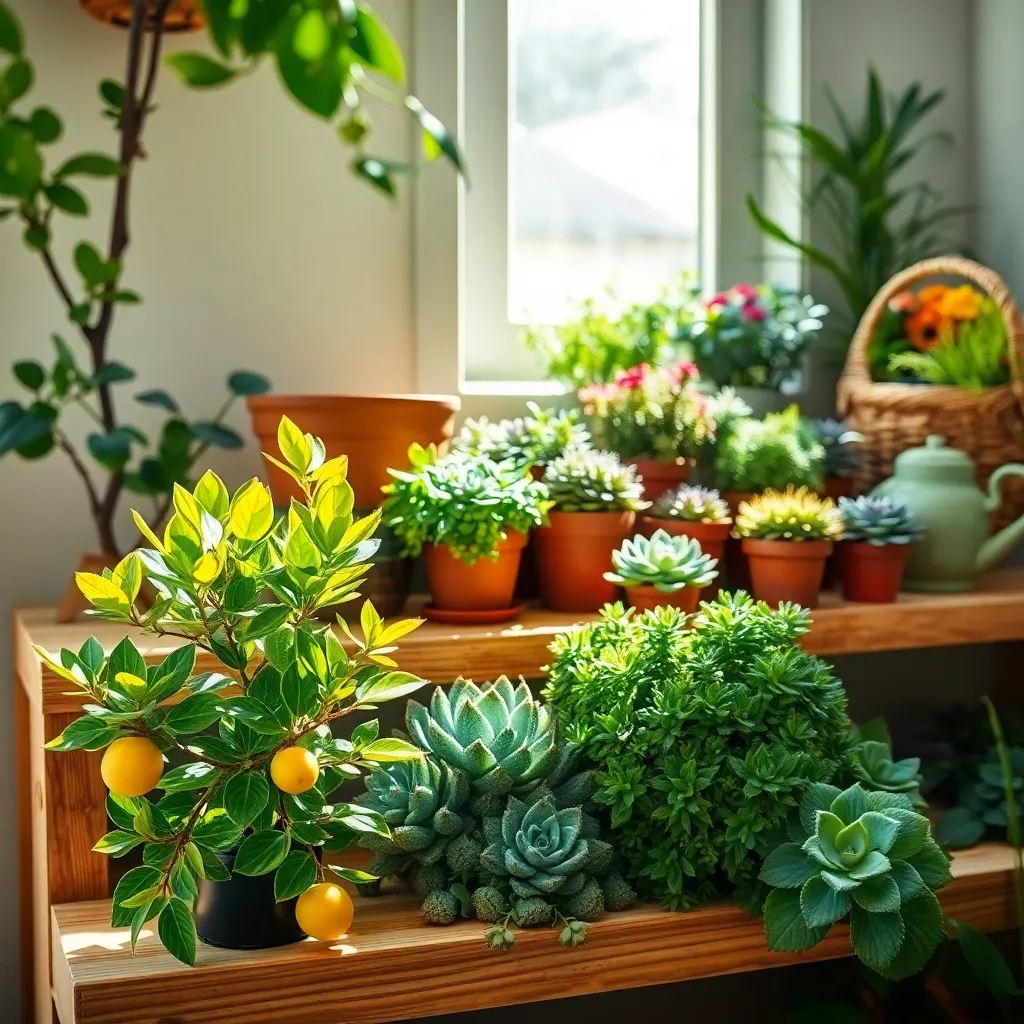
For small indoor spaces, selecting compact plant varieties can make a significant difference. Dwarf and miniature versions of popular plants are specifically bred to thrive in limited environments while still providing lush greenery.
Consider plants like the Miniature Peace Lily, which requires only moderate light and occasional watering. This plant is perfect for beginners, as it’s both forgiving and easy to maintain in a variety of indoor conditions.
Another excellent choice is the Pilea Peperomioides, known for its unique round leaves and compact growth. It thrives in bright, indirect light and needs watering only once the soil has dried, making it a low-maintenance option for any indoor gardener.
Advanced gardeners might opt for the Ficus Bonsai, which offers an opportunity to practice pruning techniques while enjoying a small, artistic tree. Ensure it receives bright, indirect light and keep the soil consistently moist to maintain its health and vigor.
Maximize Light with Mirrors
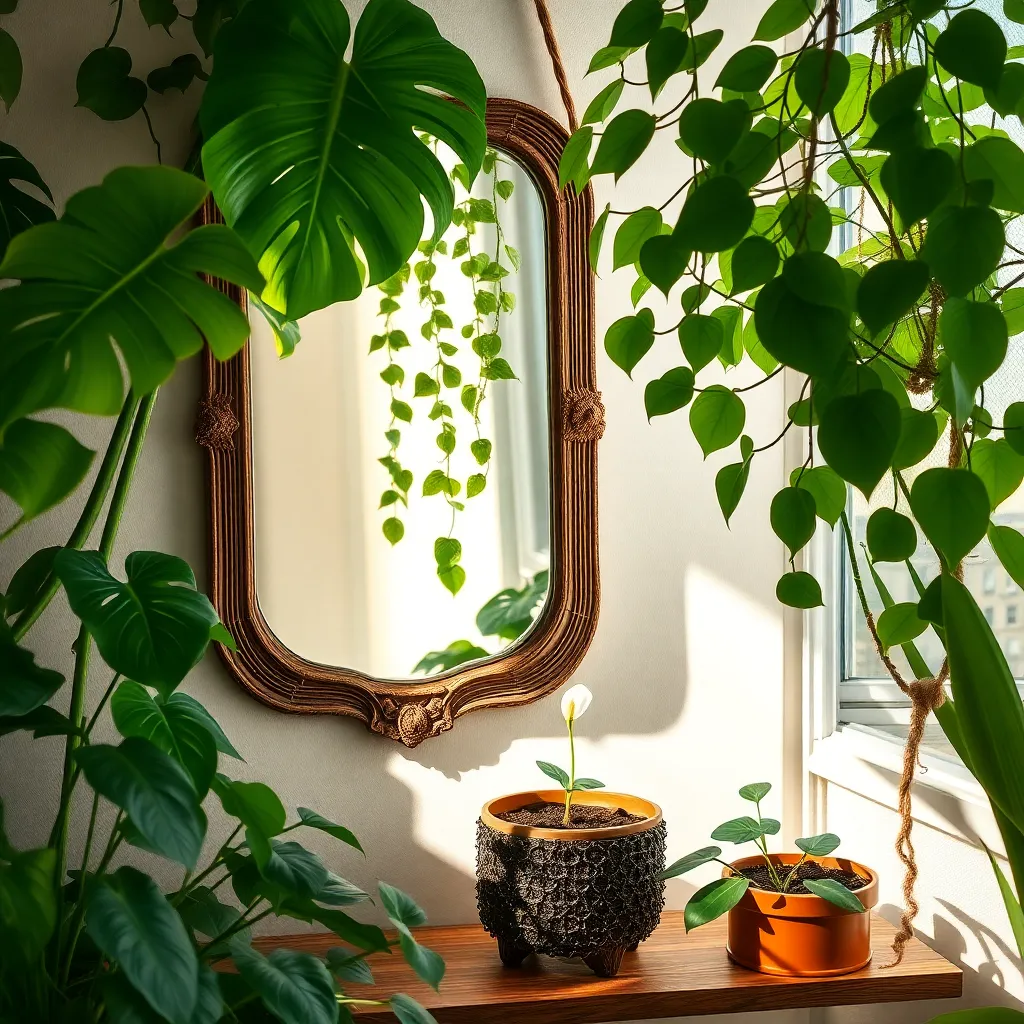
Mirrors can be a game-changer for small indoor gardens by enhancing light exposure. Position mirrors strategically to reflect available natural light onto your plants, helping them thrive even in dimly lit rooms.
When placing mirrors, ensure they are angled to catch as much sunlight as possible throughout the day. This technique can significantly boost light levels for light-loving plants like succulents and ferns.
For best results, use mirrors that are large enough to cover the surface area needed to reflect light effectively. Consider using multiple smaller mirrors to capture and distribute light from various angles, creating a more uniform light source for your plants.
Advanced gardeners can experiment with different mirror types, such as convex mirrors, to spread light more evenly across wider spaces. This approach is particularly useful in narrow rooms where direct sunlight is limited.
Conclusion: Growing Success with These Plants
In exploring the nuances of nurturing relationships through indoor gardening in small spaces, we’ve uncovered five key concepts: the importance of shared activities in strengthening bonds, the role of communication in collaborative projects, the joy of watching something grow together, the mindfulness that gardening fosters, and the creative problem-solving that small-space gardening encourages. Each of these elements contributes to building a more connected and fulfilling partnership.
As your next step, choose one of the indoor garden ideas discussed and plan a weekend project with your partner. Whether it’s creating a vertical herb garden or cultivating succulents on your windowsill, embrace this opportunity to grow both plants and your relationship.
Remember, nurturing a relationship is like tending a garden; it requires care, attention, and a shared vision. Save or bookmark this article as a guide for future projects and a reminder of the growth potential in your relationship. By investing time and effort into shared endeavors, you’re not just cultivating a garden; you’re planting the seeds for lifelong happiness and success. Embrace the journey ahead with enthusiasm, knowing that each small step brings you closer to a flourishing partnership.

